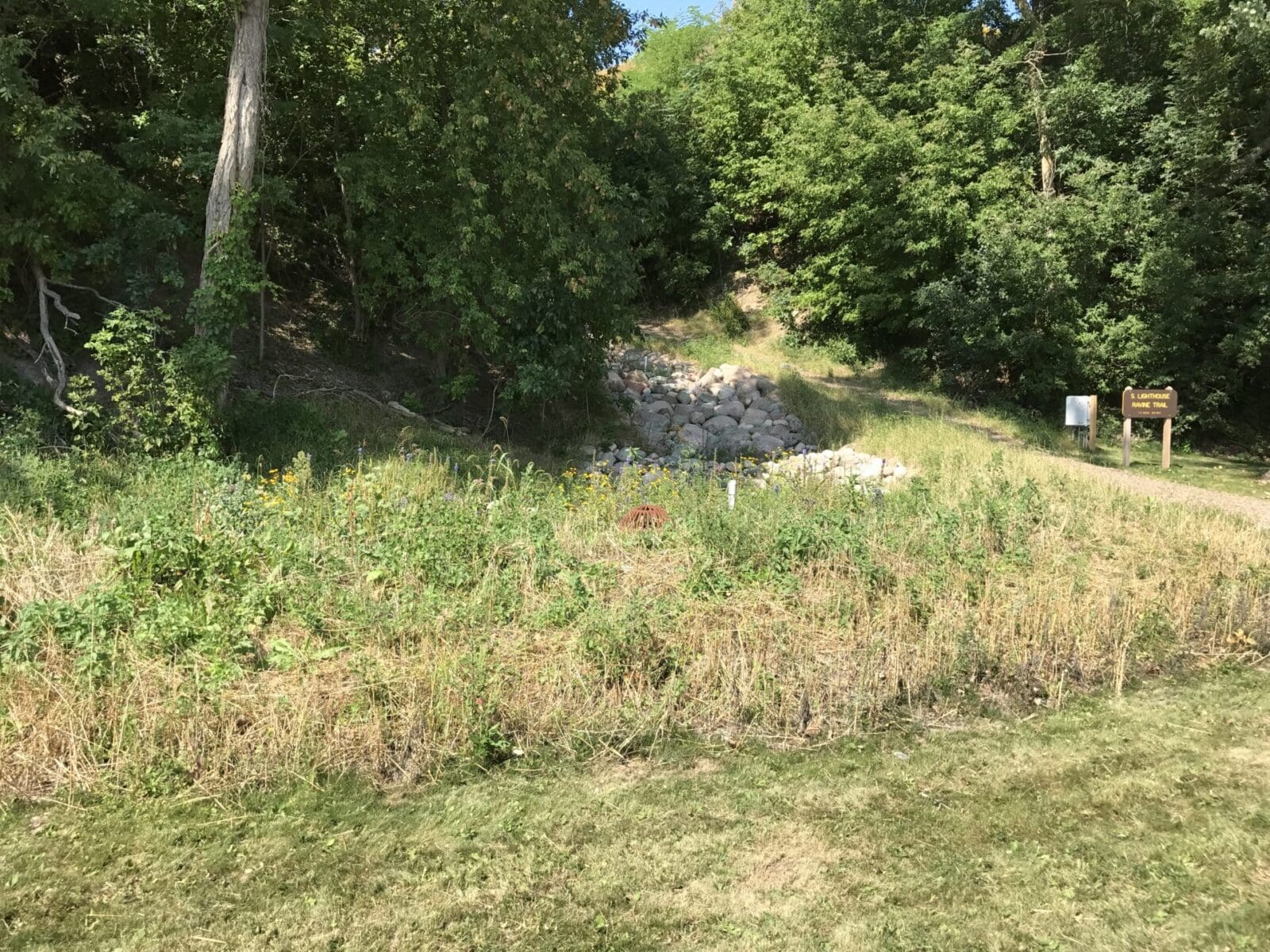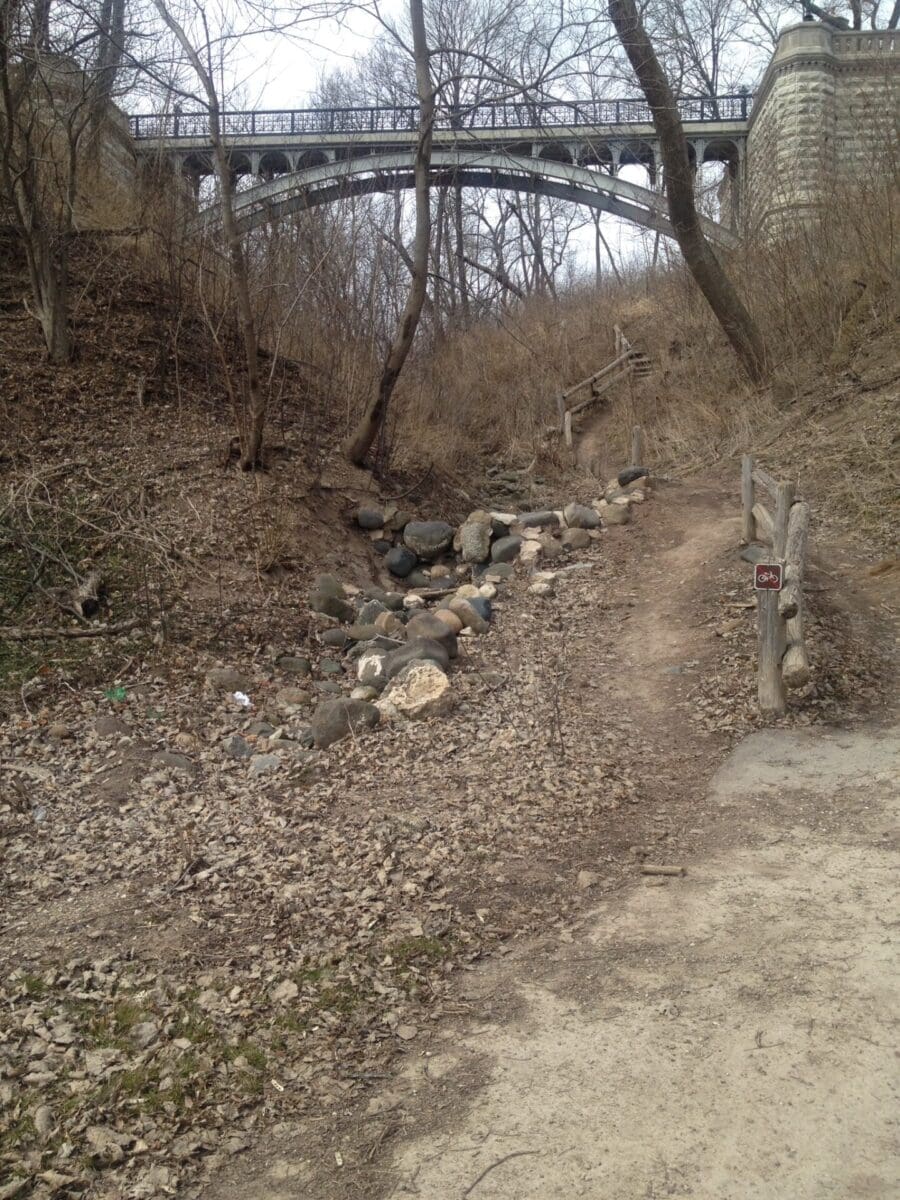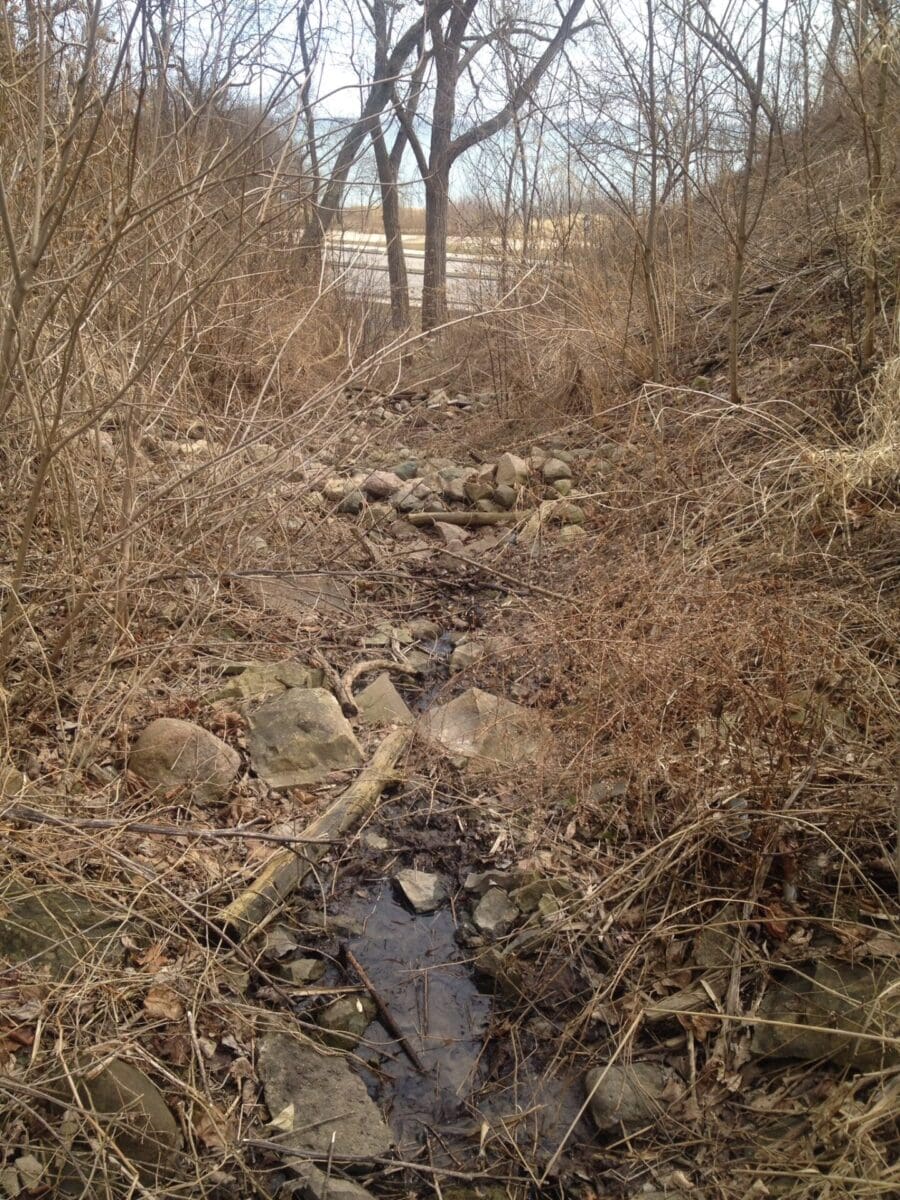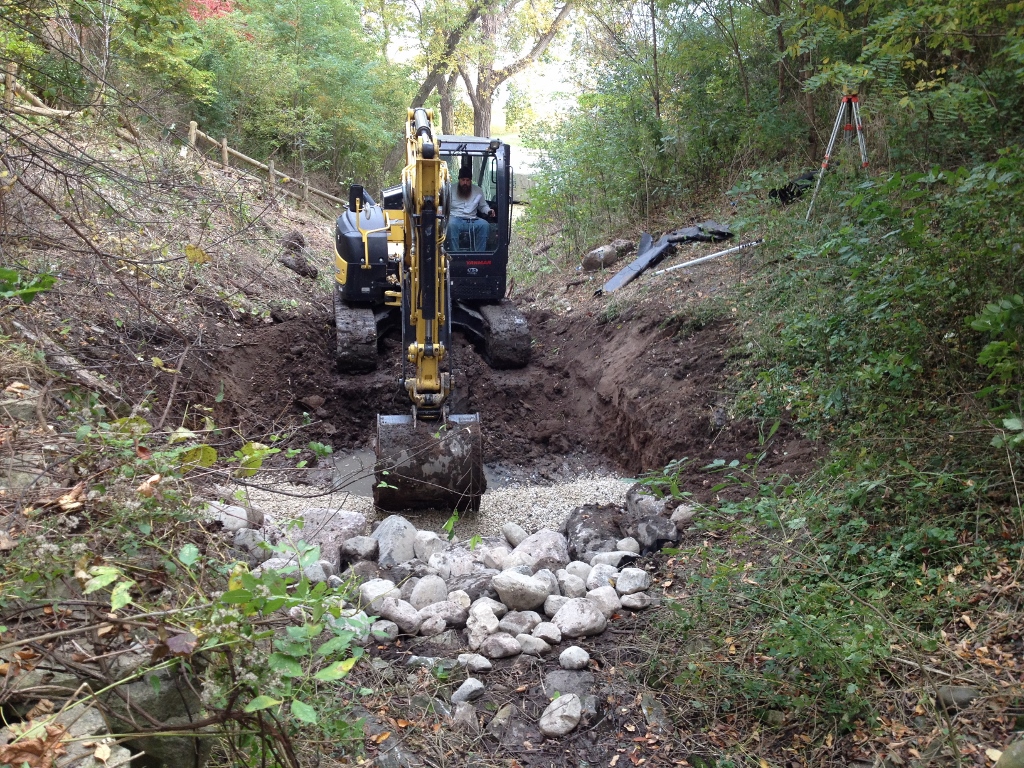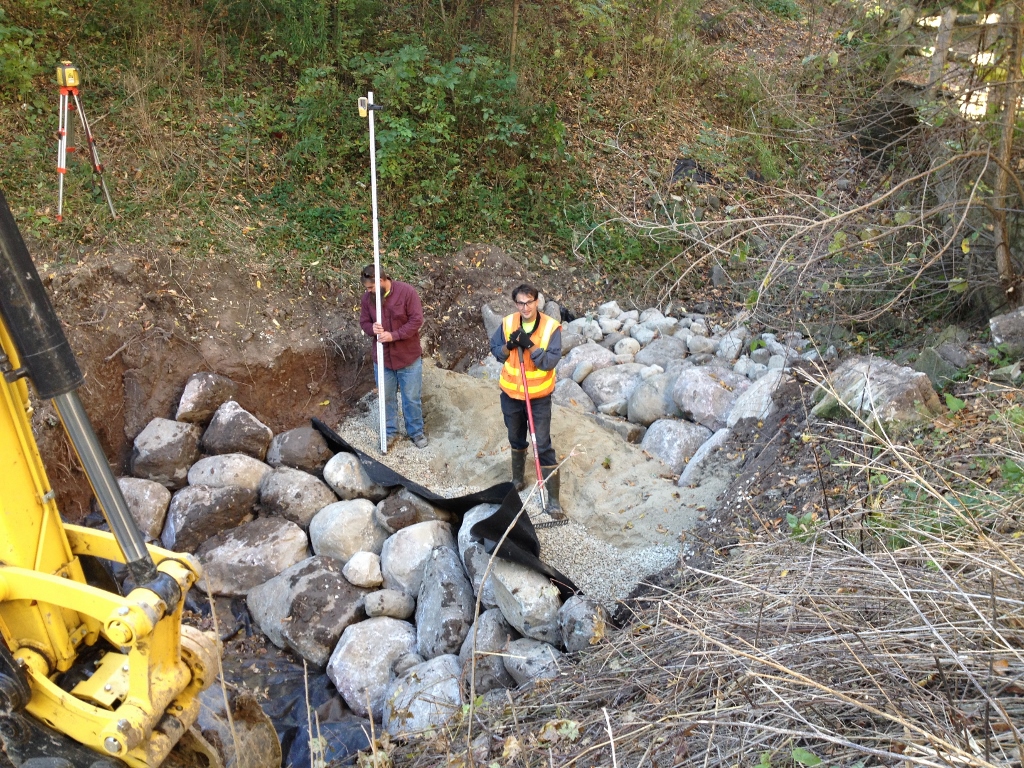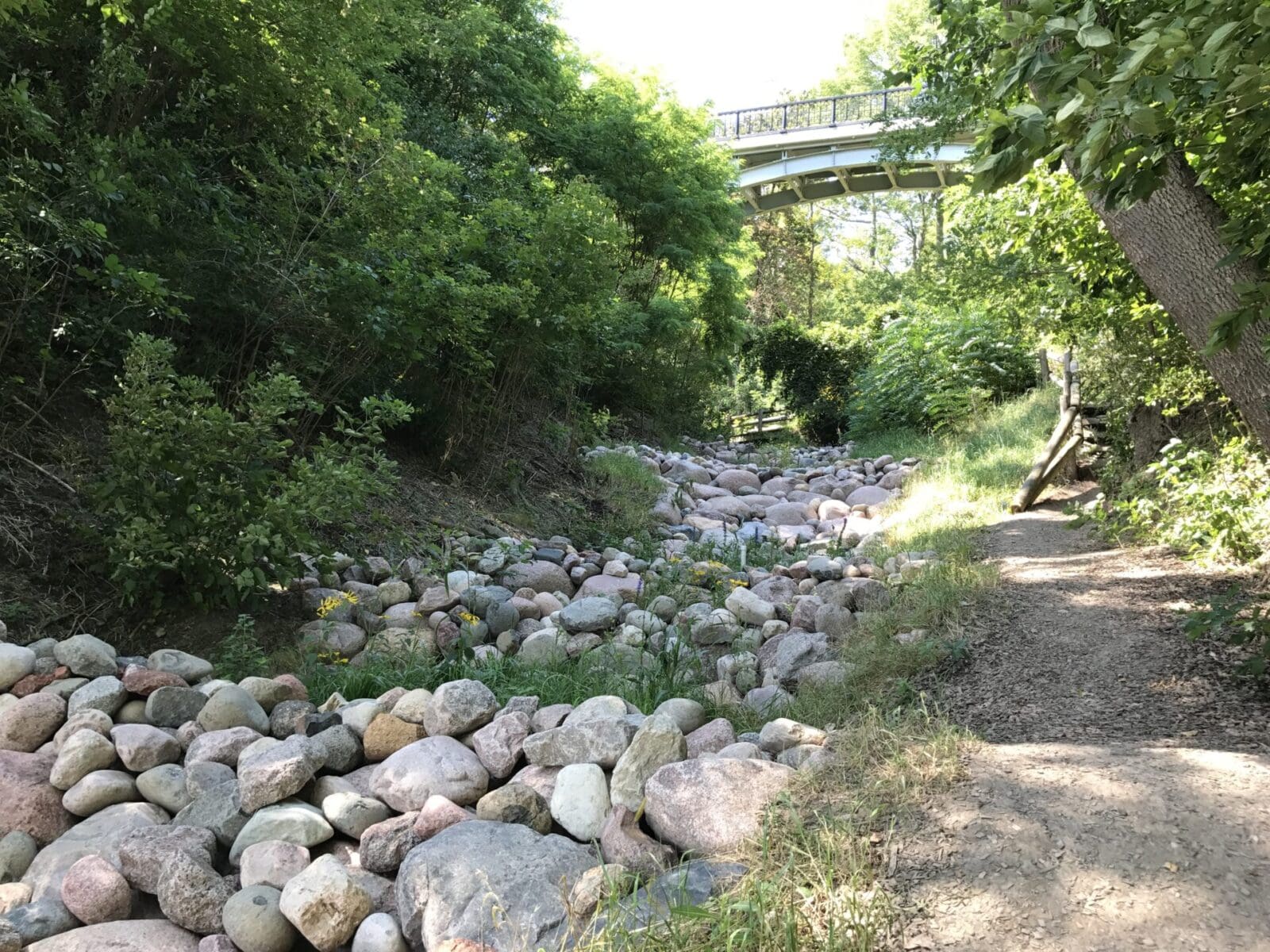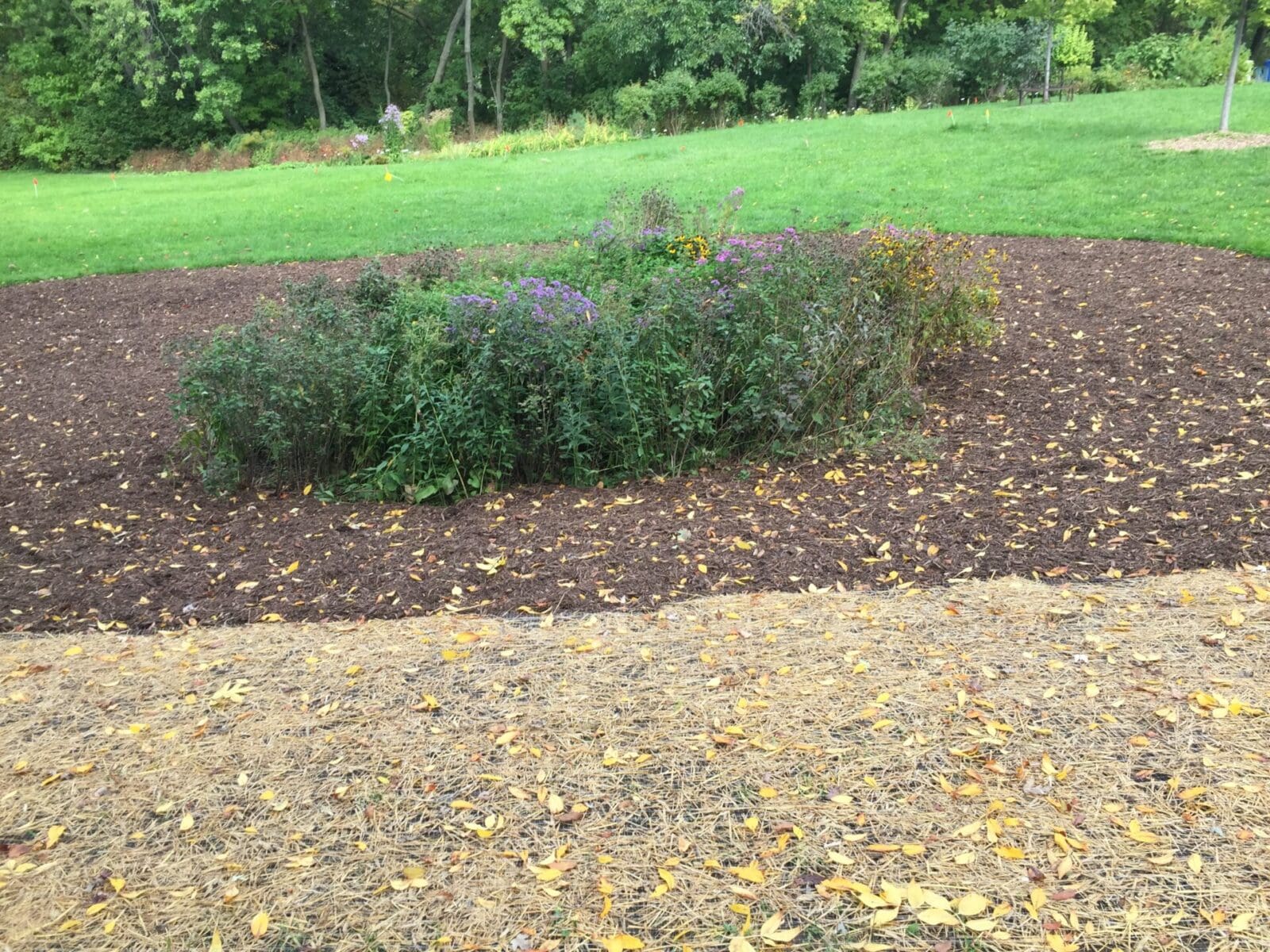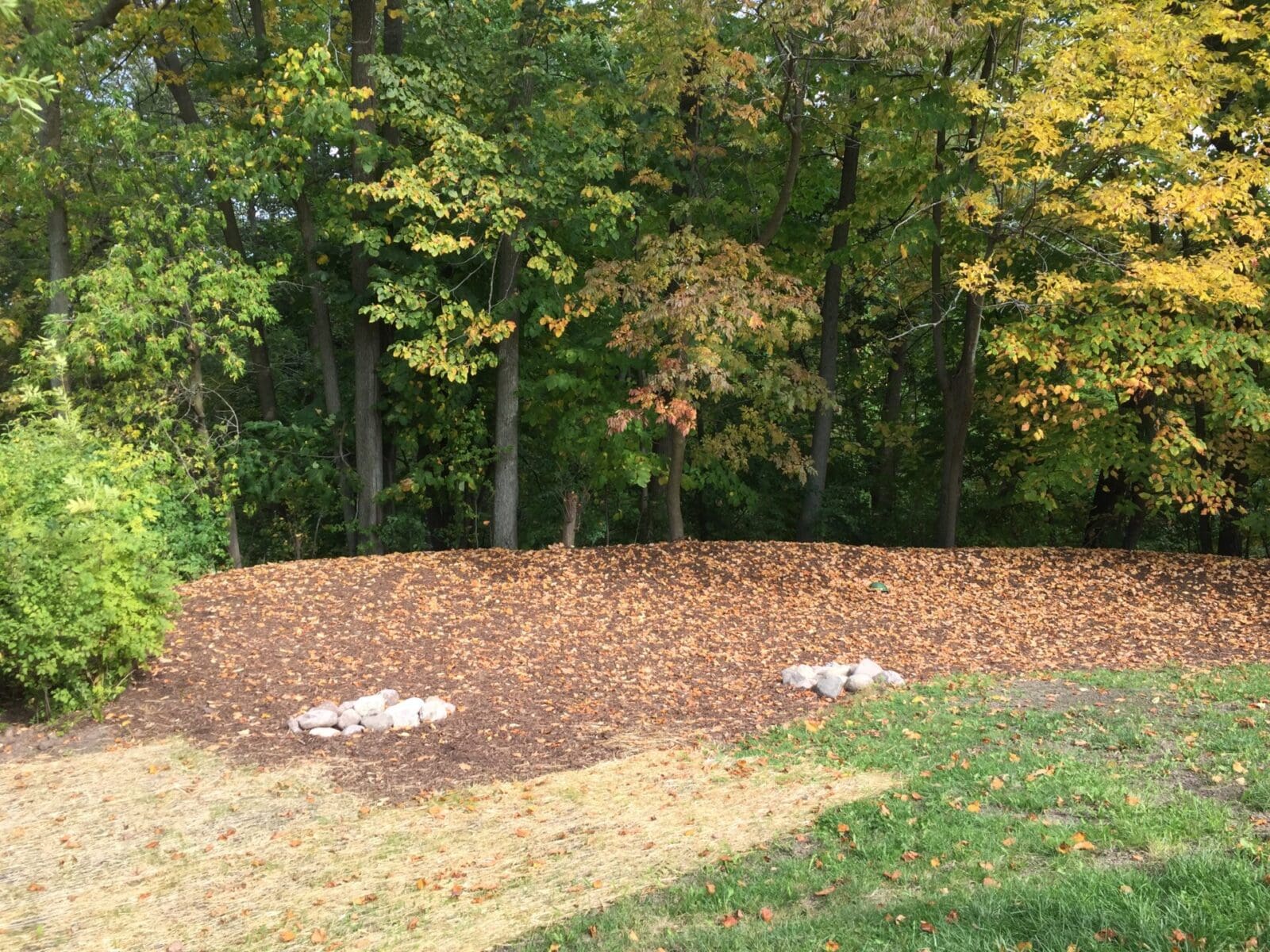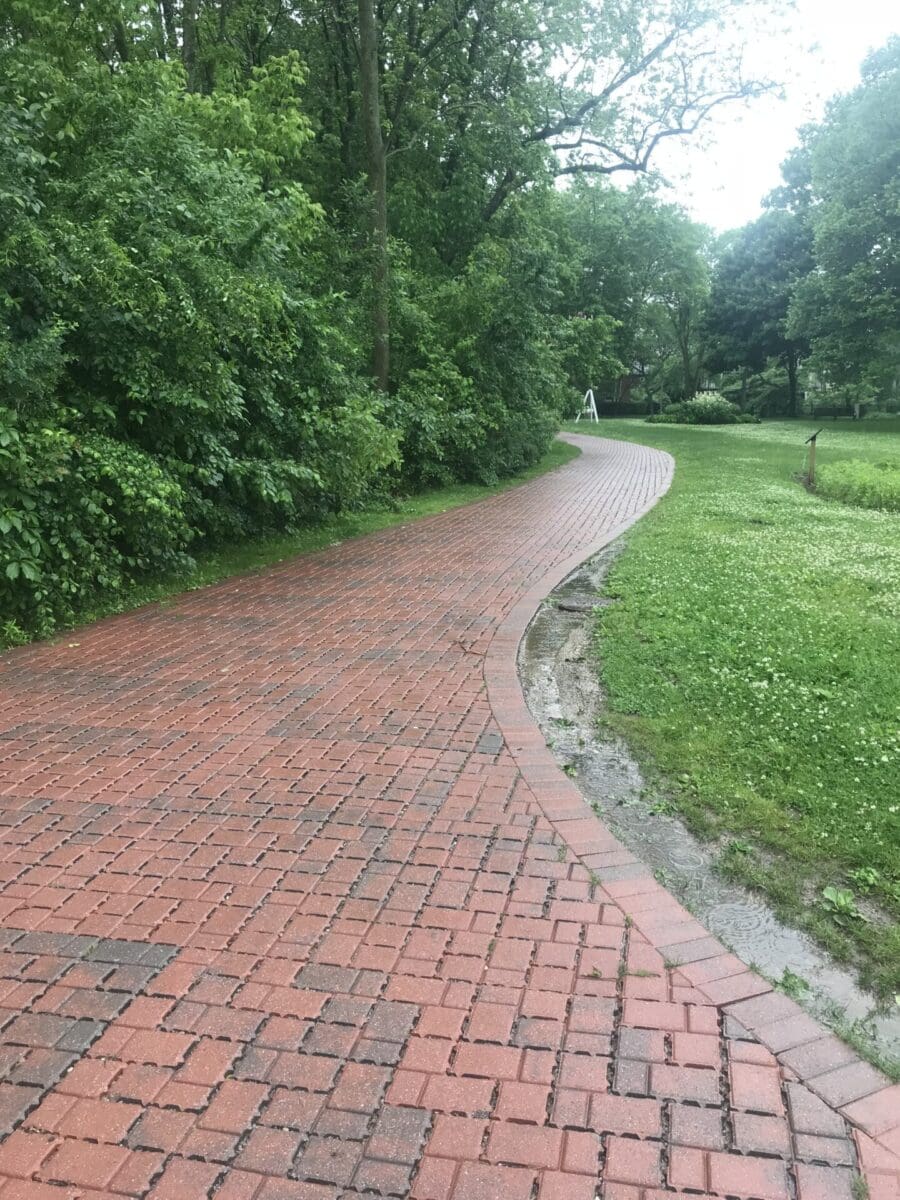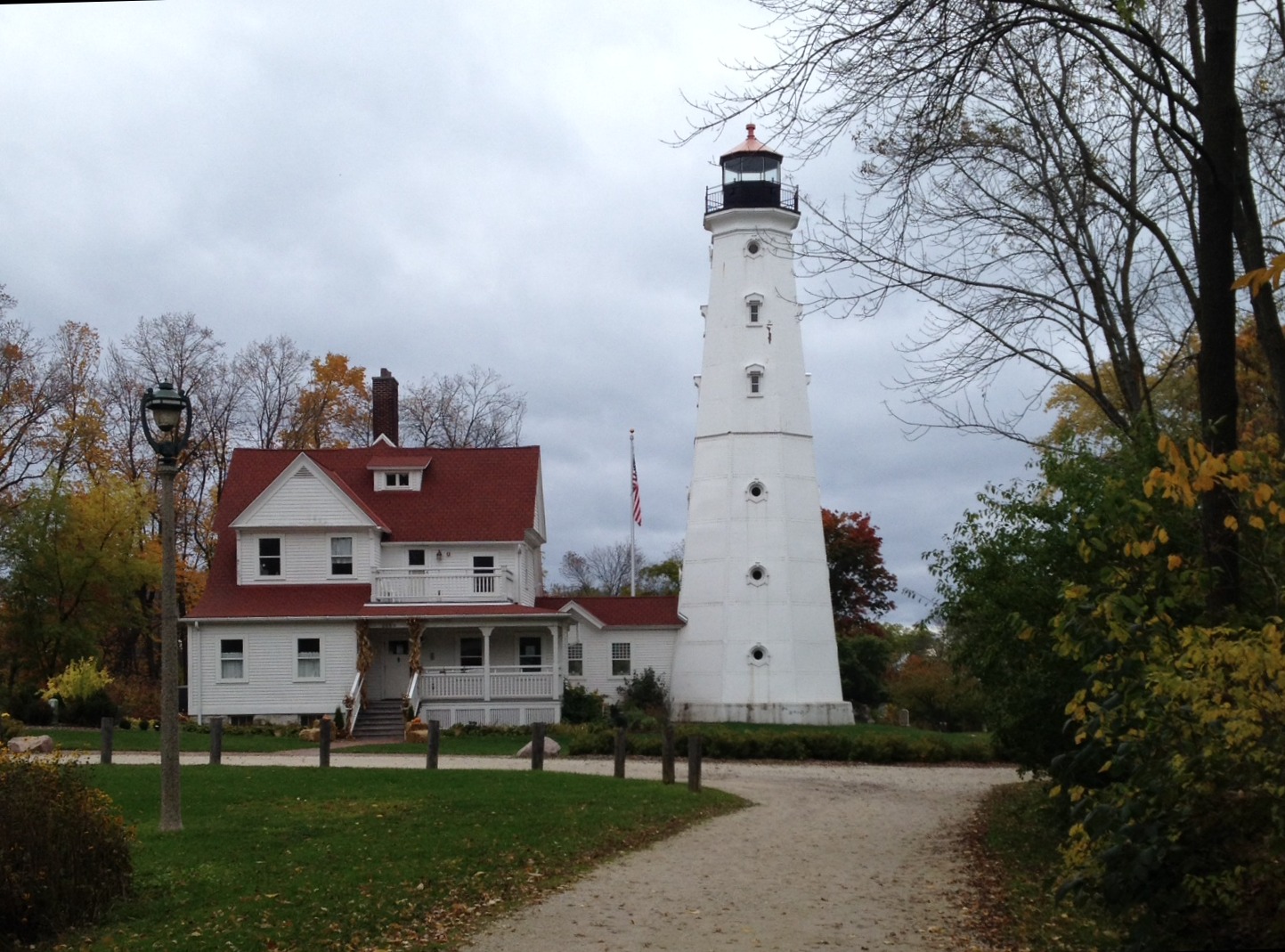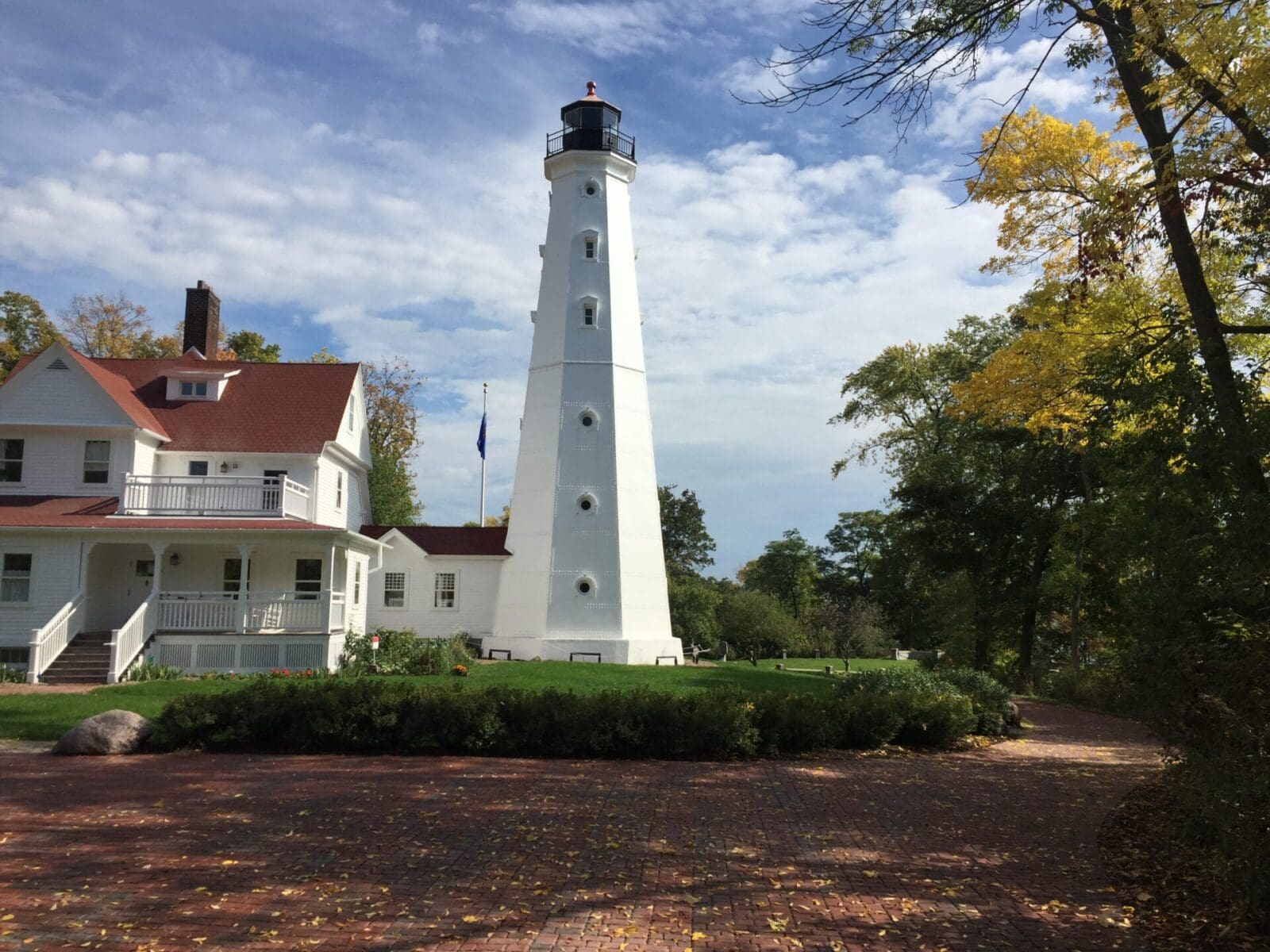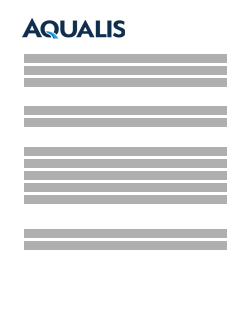Milwaukee, Wis. Lighthouse Stormwater Drainage Design
Milwaukee, Wis. |
Municipalities |
Drainage Design
Overview:
North Point Lighthouse (NPL) and its surrounding Lake Park are cultural, recreational, and historical treasures in Milwaukee. However, persistent stormwater runoff issues jeopardized the site’s natural features and the water quality of nearby Bradford Beach. Situated atop a bluff bordered by two ravines, the site suffered from significant erosion, sediment transport and bacterial loading, leading to downstream water quality problems. To address these challenges Milwaukee County Parks partnered with North Point Lighthouse Friends, Inc. (NPLF), and contracted AQUALIS (Formerly Stormwater Solutions Engineering, LLC [SSE]) to develop a sustainable green infrastructure plan. This effort sought to mitigate stormwater impacts while maintaining the site’s historical and recreational value.
Problem:
The project faced unique difficulties, since the site is categorized as a historic landmark while also being a popular recreational space. The runoff from the lighthouse property caused erosion that led to pollutant-laden discharges. The southern ravine experienced severe instability with visible degradation caused by unmanaged stormwater flow.
Bradford Beach, located downstream, suffered from deteriorated water quality with heightened sediment and bacteria levels due to the erosion upstream. Previous stabilization efforts in the northern ravine provided moderate improvements, but a more comprehensive intervention was necessary to prevent further damage to the park, the bluff and the adjoining Lake Michigan shoreline.

Before

After
Solution:
AQUALIS Engineer’s innovative green infrastructure approach combined preserving the site’s historical integrity with the need for long term, sustainable stormwater management. The project involved updating existing infrastructure and implementing new green stormwater control measures where needed, including permeable pavement, rain gardens and regenerative stormwater conveyance.
A critical component of the project was replacing 11,000 square feet of the site’s impermeable parking area and driveway with rustic red porous pavers that complemented the historic aesthetics. These permeable surfaces capture and infiltrate rainwater, significantly reducing runoff volume and improving onsite water management.
To further address runoff, the project incorporated two rain gardens. The existing rain garden near the driveway received a 1,000-square-foot expansion and the design plan incorporated a new1,000-square-foot rain garden northeast of the parking area. These rain gardens capture and treat roof runoff, reducing the amount of untreated stormwater from flowing into the ravines and Lake Michigan.
The centerpiece of the treatment train was the installation of a 225-foot-long regenerative stormwater conveyance (RSC) system within the south ravine. Designed to emulate natural headwater streams, the RSC is a structure of step-pool with a sand media bed to slow stormwater flow, promote infiltration and enhance pollutant removal. This innovative solution stabilized the ravine while creating a more visually appealing and ecologically sound landscape.
Beyond the physical infrastructure, the project included an interactive educational element to engage the public. An indoor touchscreen dashboard in the North Point Lighthouse Museum displays real-time water level data from the green infrastructure system, demonstrating its effectiveness and educating visitors on sustainable stormwater management.
Upon completion, the integration of Green Stormwater Infrastructure (GSI) successfully reduced stormwater runoff, minimized erosion and improved water quality. Now the treated outflows are directed to existing infiltration cells at Bradford Beach, enhancing broader shoreline protection efforts. The collaborative approach ensured the preservation of the site’s historic charm and recreational appeal while showcasing green infrastructure’s capacity to solve complex environmental challenges. Today, North Point Lighthouse stands as a model for integrating historical preservation and sustainable stormwater management, inspiring similar initiatives across the region.
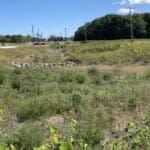 Kenosha, Wis. Highway KR Regenerative Stormwater ConveyanceThe Root-Pike Watershed Initiative Network Kenosha County, and others worked with AQUALIS to design and implement an innovative solution for stormwater control along Highway KR.
Kenosha, Wis. Highway KR Regenerative Stormwater ConveyanceThe Root-Pike Watershed Initiative Network Kenosha County, and others worked with AQUALIS to design and implement an innovative solution for stormwater control along Highway KR.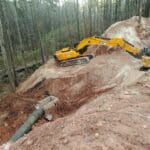 Durham, N.C. Sinkhole Leads to Stormwater System RehabilitationThe tenant on this property noticed a depression that opened to the ground below and notified the property owners.
Durham, N.C. Sinkhole Leads to Stormwater System RehabilitationThe tenant on this property noticed a depression that opened to the ground below and notified the property owners.

